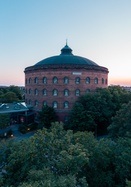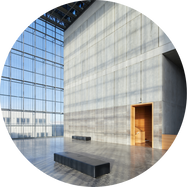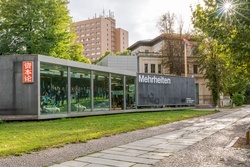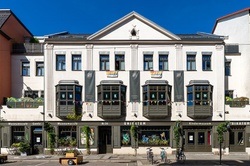
Naturkundemuseum Leipzig
In the location's words:
The Leipzig Natural History Museum is one of the most important institutions in Saxony, where the treasures of our local nature, flora and fauna, habitats, their geological foundations and the beginnings of the region's settlement history have been and are comprehensively documented. The collections, mostly meticulously compiled by citizens in time-consuming voluntary work and often left to the museum as donations or bequests, form the basis of the most extensive nature archive in north-west Saxony.
Extensive finds from the tertiary geological period in the former large-scale open-cast lignite mines around Leipzig offer the opportunity of a unique presentation of 50 million years of climate and landscape history. No other region in Europe has been so heavily perforated. In addition, there are 10,000 years of natural and cultural history of a region in which the interactions between the floodplain landscape with its rivers, forests and meadows and human settlement have led to a diverse and species-rich natural and cultural landscape, the evidence of which can be found as the most valuable cultural assets in the museum's collections. Many of the specimens in the vertebrate collections were created under the hands of Hermann ter Meer, probably the most famous revolutionary of modern taxidermy.
This content has been machine translated.Öffnungszeiten
Future events by Naturkundemuseum Leipzig
Similar pages
 Museum
Museum
Bach-Museum Leipzig
 Museum
Museum
MÄDLER ART FORUM
 Museum
Museum
Panometer Leipzig - 360…
 Museum
Museum
GRASSI Museum für Angew…
 Museum
Museum
Haus Böttchergäßchen - …
 Museum
Museum
Altes Rathaus - Stadtge…
 Museum
Museum
Kunstkraftwerk Leipzig
 Museum
Museum
Museum der bildenden Kü…
 Museum
Museum
Museum Zum Arabischen C…
 Museum
Museum
Galerie für Zeitgenössi…
 Museum
Museum
Musikinstrumentenmuseum…
 Museum
Museum
Museen im GRASSI
 Museum
Museum
GRASSI Museum für Völke…
 Museum
Museum
INSPIRATA – Zentrum für…
 Museum
Museum
Stadtbibliothek Leipzig
 Museum
Museum
Gipsabguss-Sammlung der…
 Museum
Museum
Antikenmuseum der Unive…
 Museum
Museum
UNIKATUM Kinder- und Ju…
 Museum
Museum
Museumsnacht Halle & Le…
 Museum
Museum
G2 Kunsthalle



